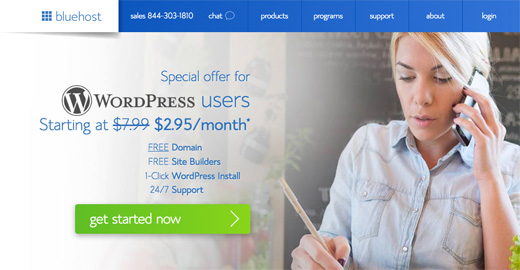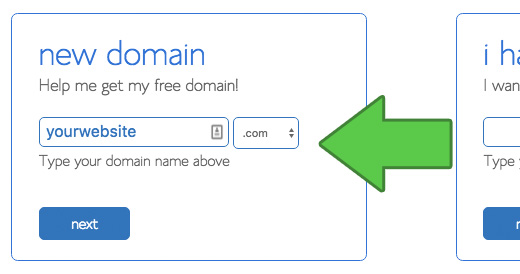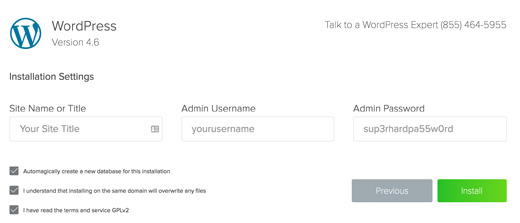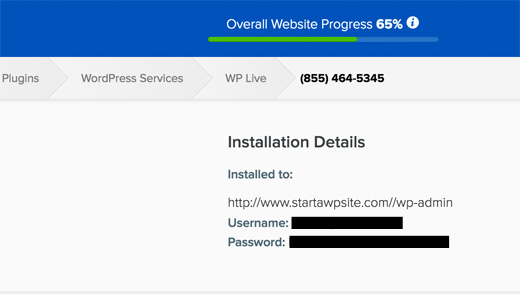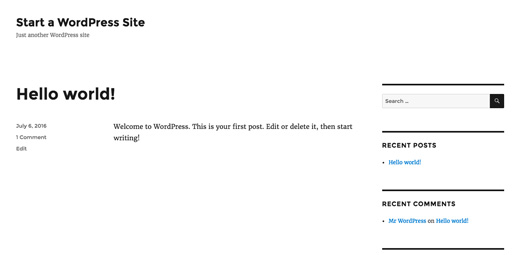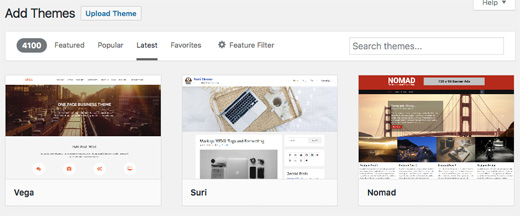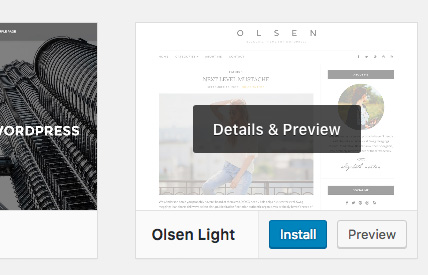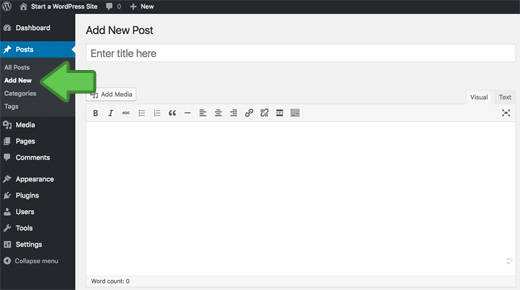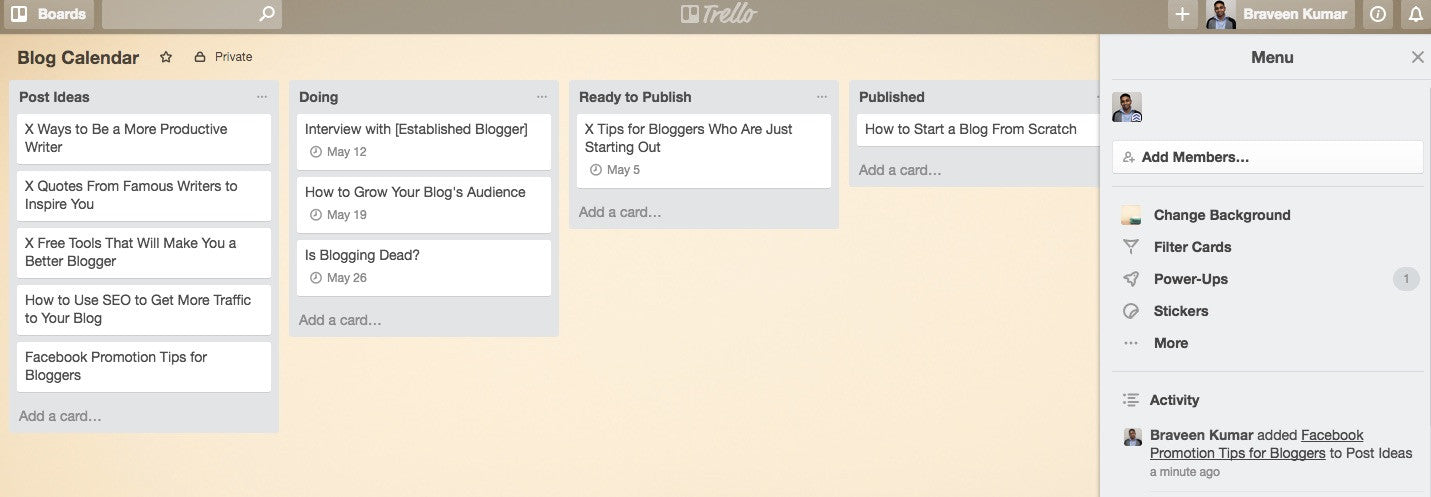
]
How to Start a Blog That You Can Grow Into a Business
![how to start a blog]()
Businesses of all kinds start blogging as a way to build up a long-term audience.
But the reverse is also happening where more and more bloggers start businesses as an extension of their publishing. And it makes sense.
One of the biggest challenges new businesses face is building an audience for their products. Bloggers, on the other hand, often work backwards, building an audience first by consistently putting out good content, and then exploring ways to monetize their traffic.
Starting a blog is easy if you just want to have fun. But if you’re thinking about making money as a blogger down the road, you’ll need to be strategic about how you set it up for success.
This guide will take a thorough look at what you need to know to start a blog and grow it into a source of traffic and income. And while it’s meant for those who haven’t started a business yet, it’s relevant for any businesses that want to get into the blogging game.
But first let’s answer an important question that may seem obvious at first.
What Is a Blog?
You’re reading one right now.
A blog or “web log” is a web page for content that you regularly add to and update. Unlike other publications and articles, blogs tend to take on a more personal tone that helps them connect more deeply with their audiences.
People start blogs for all kinds of reasons, including:
Sharing their opinions, passions, or glimpses into their lives.
Teaching others what they know.
Building an email list.
Developing their personal brand as an expert.
Selling products or services.
A combination of any or all of the above.
For these reasons, blogging can be incredibly fulfilling—especially when complete strangers start consuming your content—but it’s also a commitment.
Whether you publish daily, weekly, or monthly, it’s important to be as consistent as possible, not just in how often you publish but in the kind of content you publish as well.
It’s very rare for bloggers to see results right away, so keep in mind why you’re doing it to stay motivated in the early stages.
How to Start a Blog
The hardest part about blogging is finding the time and the ideas you need to do it consistently. Getting started, however, is fairly straightforward.
Starting a blog with the potential to be a business comes down to the following steps, which we’ll explore in detail:
Consider the different opportunities to monetize.
Pick an audience to serve.
Choose a blogging platform, a domain name, and build your blog.
Lay the groundwork for distribution.
Planning out your publishing strategy.
If you’re wondering why we’re talking about monetization first, it’s because we need to think more like an entrepreneur than just a blogger in order to make this a profitable venture.
Different Ways to Make Money Blogging
There are a bunch of ways you can monetize your blog, depending on the kind of blog you decide to start. But people usually think of ads first for some reason.
The truth is, there are better and faster ways to make money with your blog that don’t require a massive volume of page views every day. It's twice as true if you can build a loyal audience, not just a large one.
You can make money blogging by:
Selling physical products that align with your audience, whether it’s t-shirts or hot sauce.
Selling digital products like resumes, photos, or designs that you create once and sell again and again and again.
Selling services like writing, consulting, and design.
Publishing a book and selling it as a physical or digital product.
Becoming an affiliate for another brand and make a commission every time you sell their product.
Donations powered by platforms like Patreon.
Doing paid reviews/promotions for brands.
There are ample opportunities to monetize your blog, but you have to enjoy what you blog about in order to succeed.
Your most important consideration—more than making money—will be who your audience is and how you’re going to serve them.
Picking a Niche: What’s Your “Thing” Going to Be?
There’s no shortage of content on the internet. It may seem hard to stand out (it is), but there are two ways you can compete: By choosing a specific audience to focus on and by creating content that has something about it that readers can't easily find elsewhere.
You can do this in a number of ways:
Focus on a specific location (e.g. New York).
Focus on a specific segment within a larger category (e.g. not just recipes, but vegan recipes).
Deliver your content in a different style or voice (e.g. humor).
Compete with quality (e.g. in-depth posts on a topic that no one else is willing to do).
BlogTO, for example, covers a wide range of lifestyle topics but focuses specifically on the diverse city of Toronto.
Source: BlogTO
The niche you choose is important as it not only has to be an audience that you can sustainably serve with a steady flow of content ideas, but will ultimately determine how you explore monetization later. Consider what kind of products or services you could potentially sell to this audience, and whether you know enough or care enough about that topic to cover it many, many times over.
Once you have some ideas for niches, use Google to look up your competitors on the topic and use Buzzsumo to get a sense of how well content on this topic performs and what channels it performs best on.
Choosing a Platform and Building Your Blog
This is where many would-be bloggers get stuck. They’re not exactly sure which platform they should invest their time and money on.
The choice usually boils down to a self-hosted or hosted platform:
Self-hosted: These platform generally offer more customization options, but you will still have to pay a monthly fee to host the site yourself and it requires some initial setup. Wordpress.org is the go-to platform if you’re considering the self-hosted route. This guide from Smashing Magazine will walk you through it.
Hosted: These platforms let you get started right away and some of them have built-in audiences. Some are free like Blogger and Wordpress.com (the hosted alternative to Wordpress.org) and some are paid.
When choosing a platform, think about the future and how you want to monetize your blog eventually. Not all platforms will give you everything you need, while some will give you more than you will ever need.
Some bloggers opt for free hosted platforms like Medium and Tumblr because they give you access to an engaged community of other bloggers and readers on the platform. We’ll discuss it in more detail later, but you can republish on these platforms to take advantage of their audiences—you don’t need to build your main blog on these free platforms to use them.
Shopify is a hosted platform that includes both an ecommerce site and a blogging platform, as well as hundreds of apps you can add as you grow, if you want to sell physical/digital products or services right away. You can start your 14-day free trial today.
Picking a Name and Theme For Your Blog
Once you’ve picked your platform, you should considering buying a domain name (yourblog.com) and a theme (the look and layout of your blog).
Shopping for a domain is a good time to think about what you’re going to call your website. Choose something that’s catchy, memorable, easy to type, and isn’t already taken by another brand.
Unless you’re trying to build a personal brand or a portfolio site, I would recommend against using your name as the domain. You can still be the face of your blog even if your name isn’t in the URL, and it’s a lot easier to build a sticky brand when you come up with a creative name that reflects your blog’s identity. To add some more personality, get a logo made on Fiverr or use our free logo generator app (Android only).
Once that’s settled, you’ll need to pick a theme.
A “theme” is just a template for the layout, look, and features of your website. There are plenty of free themes available, whatever platform you choose. But if you’re not happy with those options, consider paying the one-time fee for a paid theme as it will have a big impact on the overall experience users have on your website.
Source: Shopify Theme Store
Laying The Groundwork for Growth
We usually talk about growing an audience after we start publishing. But if you want to build up momentum quickly, you need to start thinking about it even before you launch.
Many bloggers struggle with distribution, and I think there’s two parts to the reason:
They don't have a concrete, repeatable distribution strategy within their publishing process.
Publishing is already a nerve-wracking experience, and amplifying your reach makes it that much scarier.
The latter is something you eventually get over, but the former requires some initial thought and investment of time before you launch.
So let’s walk through some of the ways you can plan for growth and get the most out of every post you create.
Start Collecting Emails as Soon as Possible
It doesn’t matter what platform you’re blogging on, you should be focusing on getting email subscribers. Every new subscriber is a sign that you’re doing something right and is a potential repeat reader that you can easily reach.
Even if you switch platforms down the road, or decide to start something new, your email list remains with you.
MailChimp is an easy email marketing tool to recommend because it’s free up to 2000 subscribers. But it’s not enough to just have a subscriber list. You need to capture these emails at every turn and you do that with sign-up forms.
A good habit to get into is to embed sign-up forms directly into your content with a call to action to subscribe, like the one you see below.
Many email marketing solutions lets you create and use these forms easily. You can even generate a link that directs to a separate sign-up page that you can link out to in your blog posts, social media, and email signature.
Remember that people aren’t going to subscribe to your blog if you don’t ask and if you don’t make it easy for them.
Every time you publish a post, you should email it to your list—a process you can automate down the road once you get into the swing of things.
Look For Opportunities to Go After Search Engine Traffic
Using keyword research, you can get an idea of how much search volume there is for particular search queries in your niche. The higher the number, the more demand there is for a topic, and the more traffic you can potentially generate long-term.
The easiest way to do this is to simply install the Keywords Everywhere Chrome Extension and start googling from your audience’s perspective to try to unearth interesting content ideas. Queries that start with “how to…” or “best...” are a good place to start.
Even if you don’t land a spot on the first page of the search engine results for these searches, you’ll have a content idea with proven demand. But if you want to aim high, you can learn more about SEO. And if you're on Shopify, consider the free SEO Checker app for optimizing your posts.
Set Up Your Social Media Strategy
At first, it might seem like a smart move to be on every single social media platform, but that gets hard to manage fast and isn’t always effective.
Instead, focus on the channels where your audience spends the most time. Depending on your niche and your resources, your choice of channels will vary.
For example, a Facebook Page is a good all-around asset for any blogger who’s willing to pay to promote their content. On the other hand, a cost-conscious food blogger will probably stand to get a lot more free engagement on Pinterest and Instagram than Twitter.
Don’t neglect your personal networks either—your friends and family make a great early audience.
Reduce, Reuse, and Resurface Your Content
You can’t put out large posts every day. A good blogger knows how to reuse and repurpose their content to get the most mileage out of it.
So, here are some ideas to keep in mind as you go forward:
Create "micro-content" for social media from existing posts with tools like Canva.
Post a roundup of past blog posts with a common theme (e.g. “Our Best Posts of 2016”).
Recreate blog posts as other types of content, such as infographics or quizzes.
Regularly republish your content on new platforms with built-in audiences like Medium, LinkedIn, or Tumblr to get more early exposure, adding a link to the original post to the top (“Originally published on youblog.com”) to increase your chances of getting clicks back to your site.
Occasionally update and republish old content after a good amount of time has passed to expose it to readers who missed it the first time. This works great with seasonal content (e.g. “10 Lazy Halloween Costume Ideas”)
Consider accepting guest posts once you’ve started to amass a following. Guest authors will likely share this content with their own audiences too.
Add links to related content within and at the end of your posts. (If you’re on Shopify, install the free Related Blog Posts app.)
When time is money and you’re in the business of blogging, you need to constantly squeeze more value out of your efforts.
Understand Analytics to Understand Your Audience
The best opportunities are hidden in data.
Depending on the platform you choose you’ll have different metrics to look at, but you’ll at least get the number of views and where your visitors are coming from, which can tell you a lot about your performance.
But if you take the time to set up Google Analytics on your site (it's free), you can get deeper insights, like the average amount of time people spent reading your post, the quality of the readers coming from different sources, and even the number of readers in real-time.
Data can also be used as leverage for bloggers. The ability to prove how much traffic you bring in is a huge asset that makes others more likely to want to work with you or gain access to your audience.
Planning Out Your Publishing Strategy
Every blogger needs to keep a healthy supply of ideas and it helps if you plan ahead to ensure you never run out.
I highly recommend that you create a content calendar to help you keep track of your ideas (and keep yourself on track too).
You can use a simple spreadsheet to plan out your content calendar, but I recommend Trello since it’s free and also makes for a good place to dump ideas and organize them.
Thinking about your content mix is also important to get a sense of the scope of your blog and what categories/tags you might use to organize it all as you add more content in the future.
A good mix includes:
Evergreen content that addresses questions/queries/problems that people regularly search out on Google.
Topical content that tackles current topics and trends your audience cares about.
Curated content that is smaller in scope and requires less time to create to help you pace yourself and keep your audience engaged between longer posts.
Feature pieces about other people or brands who might share it with their audiences (e.g. interviews, reviews, etc.)
Visual or interactive content at least occasionally to add some variety to your blog (e.g. infographics, quizzes, memes, etc.).
Try to plan out your blog posts at least one month in advance and publish on a consistent schedule so your audience has an idea of how often to expect new content.
Keep in mind that you won’t grow your audience overnight. You’ll have some hits and some misses, but you need to keep going to keep growing.
Building Your Audience-Powered Business
However you choose to go about your blog, it’s your audience that ultimately determines its potential as a business. Focus on growing this audience as you publish on a regular basis, and you'll see your traffic and reach grow as well.
You can learn more about blogging better by checking out the following resources:
Blogging isn't just fun and fulfilling—it's also one of many paths to entrepreneurship. If you think like an entrepreneur when you start your blog and aim high when it comes to growth, you can build a valuable audience that can help power your business for a long time to come.
Banner Image via Burst
 Introduction
Introduction Blog Basics has worked out a special offer with Bluehost (plus a free domain name). For just $3.49 per month (42% off), you can have your blog setup in less than 20 minutes.
Blog Basics has worked out a special offer with Bluehost (plus a free domain name). For just $3.49 per month (42% off), you can have your blog setup in less than 20 minutes.
